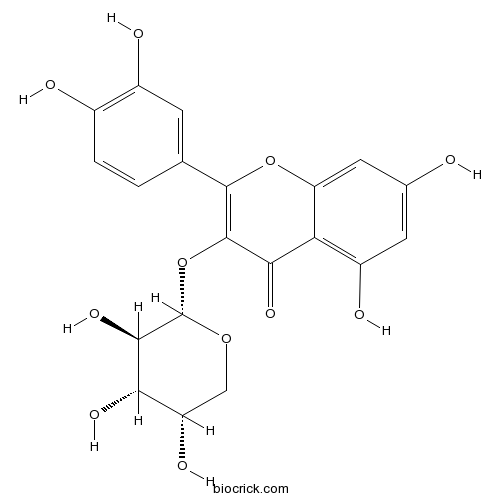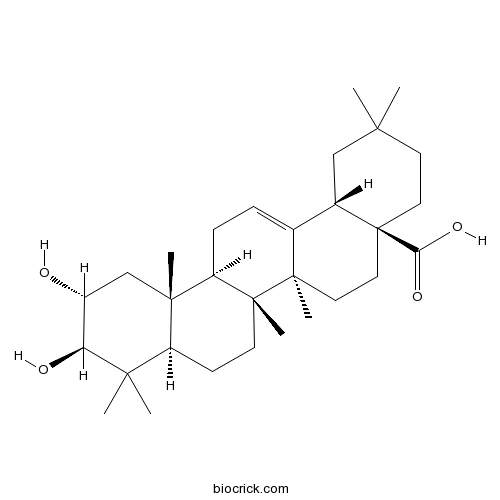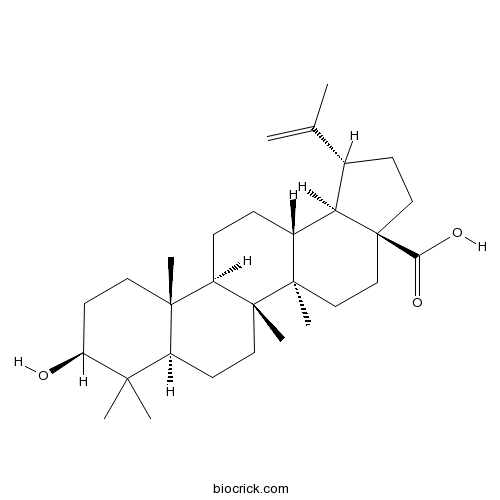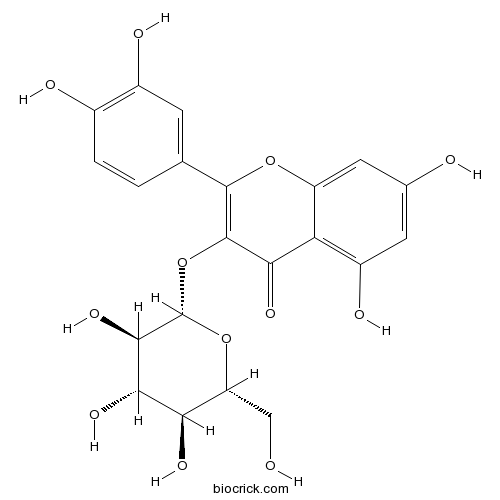Eriobotrya japonica
Eriobotrya japonica
1. The products in our compound library are selected from thousands of unique natural products; 2. It has the characteristics of diverse structure, diverse sources and wide coverage of activities; 3. Provide information on the activity of products from major journals, patents and research reports around the world, providing theoretical direction and research basis for further research and screening; 4. Free combination according to the type, source, target and disease of natural product; 5. The compound powder is placed in a covered tube and then discharged into a 10 x 10 cryostat; 6. Transport in ice pack or dry ice pack. Please store it at -20 °C as soon as possible after receiving the product, and use it as soon as possible after opening.

Natural products/compounds from Eriobotrya japonica
- Cat.No. Product Name CAS Number COA
-
BCN5056
Guaijaverin22255-13-6
Instructions

-
BCN6315
Procyanidin B229106-49-8
Instructions

-
BCN5206
Amygdalin29883-15-6
Instructions

-
BCN5487
Crategolic acid4373-41-5
Instructions

-
BCN5503
Corosolic acid4547-24-4
Instructions

-
BCN5524
Betulinic acid472-15-1
Instructions

-
BCN5569
Isoquercitrin482-35-9
Instructions

-
BCN2818
Elemicin487-11-6
Instructions

-
BCN5616
Oleanolic acid508-02-1
Instructions

-
BCN5654
Hesperidin520-26-3
Instructions

-
BCN5730
Galangin548-83-4
Instructions

-
BCN4327
Ursolic acid77-52-1
Instructions

-
BCN4450
Neochlorogenic acid906-33-2
Instructions

A 13-week subchronic toxicity study of an Eriobotrya japonica leaf extract in rats.[Pubmed: 30048729]
Eriobotrya japonica leaf is widely used in traditional medicine, and exhibits various beneficial effects such as anti-inflammatory, antiviral, antioxidant, and antitumor activities. However, limited data are available on the potential adverse effects of E. japonica.
Generation of (2-Nitroethyl)benzene and related benzenoids from L-Phenylalanine; flower scents of the Japanese Loquat Eriobotrya japonica [Rosales: Rosaceae].[Pubmed: 30043681]
None
Integrating proteomic and transcriptomic analyses of loquat (Eriobotrya japonica Lindl.) in response to cold stress.[Pubmed: 30017739]
The expression levels of many genes and the related proteins change and regulate physiological and metabolic processes that help the plant survive harsh environmental conditions under cold stress. Damage due to cold and freezing conditions often causes dynamic loss of loquat fruits in cultivated parts of northern China. To illustrate the mechanism of cold tolerance in the loquat, we combined the transcriptomic analysis with isobaric tags for relative and absolute quantification (iTRAQ) and RNA sequencing (RNA-Seq) data from loquat leaves under 4 °C treatment. The results showed 122,081 genes and 1210 differentially expressed genes (DEGs), while only 4582 proteins and 300 differential proteins (DEPs) were identified. Functional annotation and Kyoto Encyclopaedia of Genes and Genomes (KEGG) pathway analysis indicated that metabolic pathways and biosynthesis of secondary metabolites were the two most common pathways in transcriptional and translational processes in this study. Comparison analysis of the transcriptomic and proteomic profiles, only 27 of 3620 genes were found to be shared both in DEGs and DEPs. Further validation with Real-Time Quantitative RT-PCR analysis showed that the genes expression of NADP-dependent D-sorbitol-6-phosphate dehydrogenase, anthocyanin synthase and phenylalanine ammonia-lyase were consistent with the pattern of transcriptome profile, which suggested that these three genes might play vital roles in cold tolerance in loquat.
Eriobotrya japonica ameliorates cardiac hypertrophy in H9c2 cardiomyoblast and in spontaneously hypertensive rats.[Pubmed: 29974613]
Eriobotrya japonica (EJ) is a traditional Chinese plant with high medicinal value. EJ extracts are reported to exhibit antioxidant and anti-inflammatory biological attributes. The current study aims to evaluate the prospective efficacy of E. japonica leave extract (EJLE) against Angiotensin-II induced cardiac hypertrophy in H9c2 cardiomyoblast and in spontaneously hypertensive rats (SHRs). For the in vitro studies, Angiotensin-II pretreated H9c2 cells were treated with EJLE and analyzed through Western blotting and rhodamine phalloidin staining for their cardio-protective attributes. In the in vivo studies, 12-week-old SHRs were randomly divided into groups: SHRs supplemented with EJLE, control SHR group supplemented with PBS; in addition, a control group of Wistar-Kyoto rats (WKY) was also employed. All rats were supplemented twice a week for 8 week time interval. Finally, echocardiography, morphological, histology, and Western blot analysis were performed to assess their role against cardiac hypertrophy. Interestingly, we could observe that supplementation of EJLE could rescue Ang-II induced cardiac hypertrophy as evident through Western blot, rhodamine phalloidin staining, and Hematoxylin-Eosin staining. Notably, morphological and echocardiography data provided further supports for their ability to ameliorate cardiac characteristics. Cumulatively, the results clearly suggests that supplementation of EJLE promotes cardio-protective effects through amelioration of cardiac hypertrophy in vitro and in vivo.
Corrosion inhibition of mild steel in sulfuric acid solution by loquat (Eriobotrya japonica Lindl.) leaves extract.[Pubmed: 29904168]
None
Cis-regulated additively expressed genes play a fundamental role in the formation of triploid loquat (Eriobotrya japonica (Thunb.) Lindl.) Heterosis.[Pubmed: 29611056]
Triploid loquat (Eriobotrya japonica (Thunb.) Lindl.) has greater vigor than their respective diploid and tetraploid parents, but the molecular basis of this triploid heterosis remains unclear. Recent studies have suggested that DNA methylation is involved in heterosis, which is a recognized method of suppressing gene expression. However, our previous studies revealed a trend of increased DNA methylation in triploid loquat hybrids compared to their parents. To elucidate the mechanism of triploid loquat heterosis, we investigated the levels and regulation of relative gene expression between hybrid and parental lines using RNA-Seq technology. We found that gene expression in the hybrid lines was down-regulated and gene expression analysis revealed that approximately 94.56 and 86.97% were expressed additively in triploid-A and triploid-B, respectively. Analyses of the allele-specific gene expression in the hybrids revealed significantly more Longquan-1 alleles were preferentially expressed in the two hybrid lines. Further analysis of cis- and trans-regulatory effects showed that gene expression variation between parental alleles is largely attributable to cis-regulatory variation in triploid loquat and analyses of genes belonging to cis-regulatory variation showed that 88-90% of cis genes contributed to an additive expression pattern. Taken together, our results suggest that gene expression variation in triploid loquat fundamentally cis-regulated may play a dominant role in triploid loquat heterosis.
Evaluation of Low-Temperature Phosphine Fumigation for Control of Oriental Fruit Fly in Loquat Fruit.[Pubmed: 29474562]
Oriental fruit fly, Bactrocera dorsalis (Hendel; Diptera: Tephritidae), is recognized as a quarantine pest and a threat to Chinese loquat (Eriobotrya japonica Lindl.) fruit exports. Since loquat fruit is very sensitive to methyl bromide (MB) fumigation and cold treatment, in this study, low-temperature phosphine (PH3) fumigation was investigated to develop an alternative phytosanitary treatment method. Tolerance tests showed that the third instar was the most tolerant of all life stages of B dorsalis to PH3 gas at 8°C. Toxicity assay with 500-3000 ppm PH3 and subsequent probit analysis showed that 2000 ppm PH3 was optimal for fumigation and 152.75 h of treatment duration were required to achieve 99.9968% mortality. In the verification test, 144 and 168 h of treatment duration with 2000 ppm PH3 completely killed 35,277 and 35,134 B. dorsalis third instars, respectively. However, 13 live larvae were found after 120 h of treatment. Furthermore, these treatments reduced fruit respiration rates while causing no adverse effects on other fruit quality parameters, including firmness, soluble solid content, and titratable acidity over 192 h storage at 8°C. The results strongly suggest that low-temperature PH3 fumigation could be used for the postharvest control of B. dorsalis in loquat fruit.
A novel sesquiterpene glycoside from Loquat leaf alleviates oleic acid-induced steatosis and oxidative stress in HepG2 cells.[Pubmed: 29136950]
Loquat (Eriobotrya japonica) leaf has displayed beneficial effect on metabolic syndrome. In our previously study, total sesquiterpene glycosides (TSG) isolated from Loquat leaf exhibited therapeutic effect on Non-alcoholic fatty liver disease (NAFLD) in vivo, but the accurate active compound remains unknown. Sesquiterpene glycoside 1 (SG1) is a novel compound, which is exclusively isolated from Loquat leaf, but its biological activity has been rarely reported. The present study was designed to evaluate the pharmacological effect of SG1, the main component of TSG, in oleic acid (OA)-induced HepG2 cell model of NAFLD with its related mechanisms of action. In this study, both SG1 and TSG were found to significantly reduce the lipid deposition in the cell model. They could also decrease total cholesterol (TC), triglyceride (TG) and intracellular free fatty acid (FFA) contents. Compared with OA-treated cells, the superoxide dismutase (SOD) level increased, and the malondialdehyde (MDA) and 4-hydroxynonenal levels respectively decreased after the administration of SG1 or TSG. The high dose of SG1 (140 μg/mL) displayed a similar therapeutic effect as TSG at 200 μg/mL. Both SG1 and TSG were found to suppress the expression of cytochrome P450 2E1 (CYP2E1) and the phosphorylation of c-jun terminal kinase (JNK) and its downstream target c-Jun in OA-treated cell. These results demonstrate again that TSG are probably the main responsible chemical profiles of Loquat leaf for the treatment of NAFLD, for which it can effectively improve OA-induced steatosis and reduce oxidative stress, probably by downregulating of CYP2E1 expression and JNK/c-Jun phosphorylation, while SG1 may be the principle compound.


